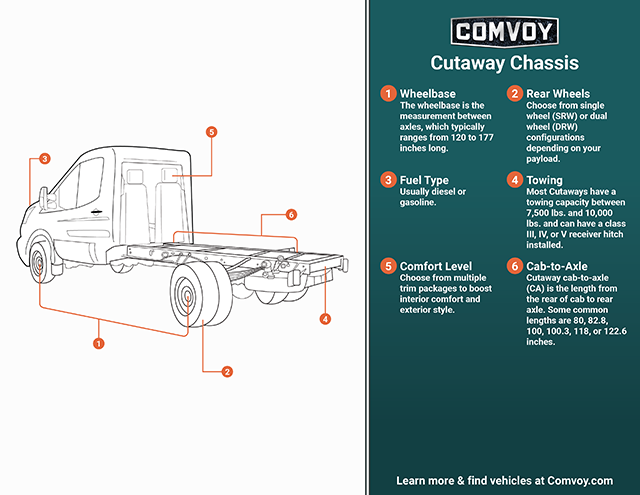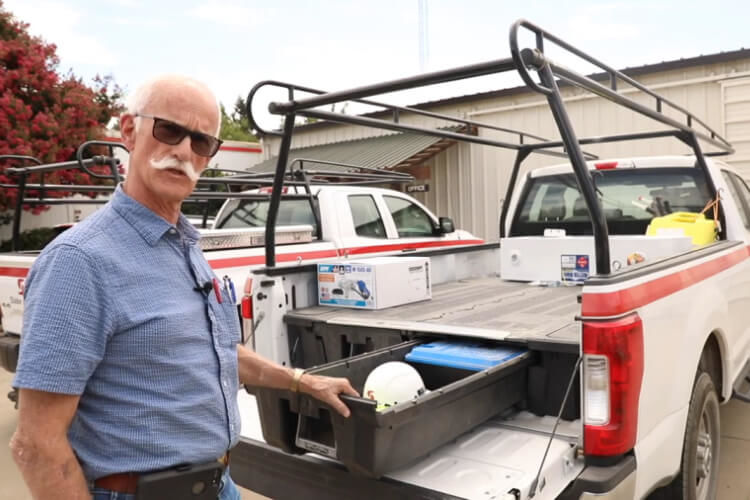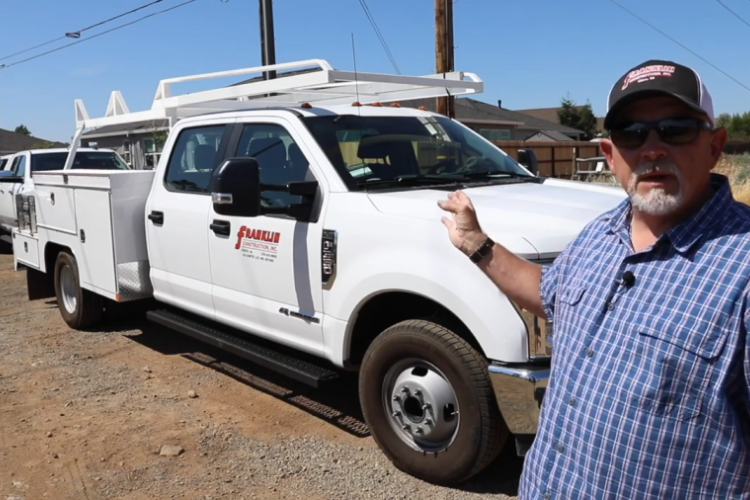Cutaway Chassis: Custom Utility


Cutaway Chassis: Custom Utility
The cutaway chassis, also known as the box van or box truck, is built for the selective business owner or fleet manager. This vehicle features all of the qualities a cargo van or work truck offers, with the added freedom to select the body type and body manufacturer that best suits your work. As a whole, the cutaway chassis delivers a unique sense of agency in the purchase of commercial vehicles.
Wheelbase
Wheelbases, both short and long, will determine how your box van performs. Defined as the distance between the front and rear axles, varying wheelbase measurements commonly range from 120” to 177” long across most box van models.
As a rule, the benefit of a short wheelbase comes from the sheer maneuverability enjoyed when compared to a longer wheelbase. Due to the shorter distance between axles, cornering and handling become far easier at the cost of a reduced cargo area.
In contrast, a longer wheelbase will provide more room for products and materials due to increased vehicle length. Though the cargo bay supports the increased capacity for materials and products, a longer wheelbase has a marginal reduction in maneuverability, further enhanced as the wheelbase becomes longer. In short, the longer the wheelbase, the longer the cutaway chassis.
Side and Rear Doors
Well-suited for the cutaway chassis, the box body comes with a variety of side and rear door configurations to keep your team moving.
Box trucks often come equipped with a rear roll-up or a two-panel swing door but options for rear three-panel or four-panel swing doors are available with each offering individual benefits. A box truck cargo area will also support both a roll-up and single or dual-panel swing door on either side of the cargo hold. Both roll-up and swing panel doors are made from a variety of materials including steel composites wrapped around a plastic or foam core, primed or painted plywood, and aluminum composites.
The benefit of a roll-up door is its’ easy-open, easy-close nature with the spring-loaded track system installed in modern box truck bodies. These doors take little force to pull up and down and enable your team to get in and out of the cargo bay as fast as possible without taking up exterior space.
Swing doors also offer effortless operation in their pull open and secure system. The swing and secure function ensure the doors are opened to 180 degrees from the original position and that they stay out of the way of your team during transport. The swing panel door comes in multiple build variations with each panel opening to reveal a different section of the cargo area. The three and four-panel configurations serve to reduce opening and closing the entire cargo area at one time.
Click Here for More Information
Rear Wheels
A single-rear-wheel and dual-rear-wheel configuration in a cutaway chassis provide varying operational benefits when compared against one another. Cutaway chassis owners enjoy a reduced impact on fuel efficiency in their single-rear-wheel models. Added weight from an upfit, as well as products and materials, will slightly impact fuel efficiency, but the average gas mileage of the single-rear-wheel model is higher than its dual-rear-wheel brethren.
The dual-rear-wheel cutaway chassis configuration, while less fuel-efficient, provides far more stability and security in its additional weight distribution. The additional wheels increase payload capacity and allow more product to be carried, resulting in fewer deliveries. Each upfit in the cutaway chassis will determine how much a chassis can efficiently carry, but the overall benefit of delivering heavier loads and making fewer deliveries makes the dual-rear-wheel configuration an optimal choice.
Fuel Type
As with most commercial vehicles, the box truck market is upheld by its diesel and gasoline models, with additional flex-fuel, propane, and natural gas options available. That said, each fuel type features a variety of benefits outside of broad geographic availability due to popular demand.
Gas-powered box truck models provide a fair middle ground in the discussion of fuel efficiency vs fuel cost. Though diesel offers more miles per gallon of fuel, the price of gasoline is significantly lower on average.
Diesel shares a marked similarity in fuel availability with gasoline with a few other added benefits. The most notable aspect of diesel engines is the enhanced hauling and towing capacity across comparable gas-powered models. Though diesel does cost a bit more at the pump, diesel box trucks enjoy increased towing capacity and fuel efficiency.
Towing
As a standard, the cutaway chassis is renowned as a choice commercial vehicle for hauling and delivering both products and materials to their respective destinations. That said, the cutaway chassis also features an infrequently mentioned capacity for towing. With an average towing capacity between 7,500lbs. and 10,000lbs., the cutaway chassis boasts further functionality outside of solely hauling materials. The cutaway chassis is an ideal candidate in cases where both product delivery and towing are required.
Comfort Level
Trim packages in a cutaway chassis make all the difference in the presentation of your business as well as the comfort of your team. Your crew will thank you for taking the time to consider individual trim packages offered by cutaway chassis manufacturers for a few reasons. These trim package levels vary amongst manufacturers but the larger seating sizes, upgraded dashboard modules, and a more spacious cab can be expected in both the mid and high-end trim packages.
Cab-to-Axle
The cab-to-axle dimension is the distance between the center of the rearmost axle of a vehicle to the rear of the cab. Though the cutaway chassis is a fairly straightforward vehicle model, this distance varies with the total length of the aftermarket upfit. When selecting the body to add to your cutaway chassis, first identifying common CA lengths should be your first stop.
Common CA measurements for the cutaway chassis include 80”, 82.8”, 100”, 100.3” 118”, and 122.6”. As these lengths increase, the available cargo space in a cutaway upfit follows suit. Taking the time to measure out the amount and size of products and materials to be handled by the cutaway chassis is an additional diligent step on the way to firming up both your vehicle and your operation.
 5 Easy Tips to Grow Your Commercial Business from HomeAdvisor - Connecting Pros with Homeowners
5 Easy Tips to Grow Your Commercial Business from HomeAdvisor - Connecting Pros with Homeowners 15 Truck General Contractor Fleet chooses Ford Trucks, DECKED Truck Boxes & GPS
15 Truck General Contractor Fleet chooses Ford Trucks, DECKED Truck Boxes & GPS General Contractors: 5 Considerations When Buying a Work Truck
General Contractors: 5 Considerations When Buying a Work Truck Fleet Management: Five Ways to Make your Contractor Business More Efficient
Fleet Management: Five Ways to Make your Contractor Business More Efficient.png) The Landscape Truck: More than a Delivery Container
The Landscape Truck: More than a Delivery Container





.png)
